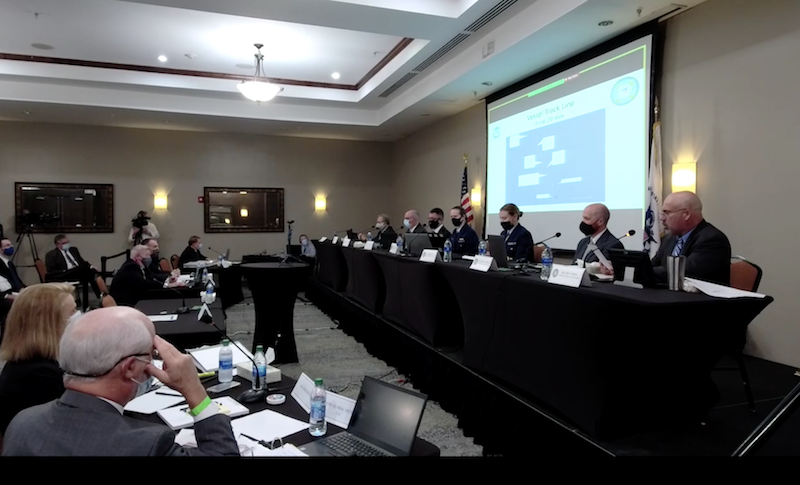The commanding officer of the Coast Guard’s Communications Command said that a “connectivity issue” kept the liftboat Seacor Power from receiving a severe weather warning from the Global Maritime Distress and Safety System on April 13 — the day the vessel capsized in the Gulf of Mexico about eight miles off the Louisiana coast.
The Communications Command is designed to deliver rapid, reliable, and secure communications operations to Coast Guard operational commanders, joint and interagency partners, civilian organizations, and the maritime public.
A small but intense low-pressure system, known to meteorologists as a wake low, passed through the area on the afternoon of the incident, creating hurricane-force winds of 80-90 mph and seas offshore of 7' to 9'.
“We have these issues maybe once a year, and it’s very limited,” Cmdr. Vince Taylor, the Communications Command’s commander testified at a Coast Guard hearing looking into the tragedy that left six people dead and seven people missing. “It just happened to be this is the date that it happened.”
But it wasn’t just Seacor Power that didn’t receive the warning. Vessels throughout the Gulf of Mexico lost their connection with the system.
The 265-class Seacor Power is a three-legged liftboat with a 49'x29'x5' working pad. It has a cargo deck capacity of 491 LT and a clear area of 11,000 sq. ft. It is outfitted with two cranes, port and starboard, each 185-ton capacity with 120' boom. The boat is owned by Seacor Marine.
Taylor’s testimony lines up with testimony last week from two of the six survivors of the accident. Both Dwayne Lewis, an independent contractor working for Talos Energy (Talos owns the offshore structure Seacor Power was contracted to work on.) and the boat’s first mate Bryan Mires testified that they weren’t aware of a severe weather warning and to their knowledge neither was the boat’s captain, David Ledet, who was among those who lost their lives.
By mid-afternoon, Seacor Power had motored into the teeth of the wake low.
A preliminary National Transportation Safety Board (NTSB) report released in May said the boat’s pilot turned the liftboat Seacor Power into the wind during the squall while the vessel’s legs were lowering, but the move couldn’t keep the boat from capsizing.
NTSB investigators learned that at about 3:30 p.m., as the Seacor Power transited the open waters of the Gulf, a squall passed over the liftboat. With visibility dropping and winds increasing significantly, the crew decided to lower the liftboat’s legs to the seafloor to hold the vessel in position until the storm passed. The crewmember at the helm attempted to turn the Seacor Power into the wind as the legs began to descend. Before the turn was completed, the liftboat heeled to starboard and capsized.
NTSB investigators also learned several people were able to escape onto the exposed, port side of the deckhouse. High winds and seas that had built to 10' to 12' prevented rescuers from reaching those who remained on the liftboat. Some were washed into the water and six were eventually rescued.
NTSB investigators have interviewed survivors, other personnel who previously crewed the Seacor Power, representatives for the owner and charterer, vessel inspectors and surveyors, and search and rescue responders.




